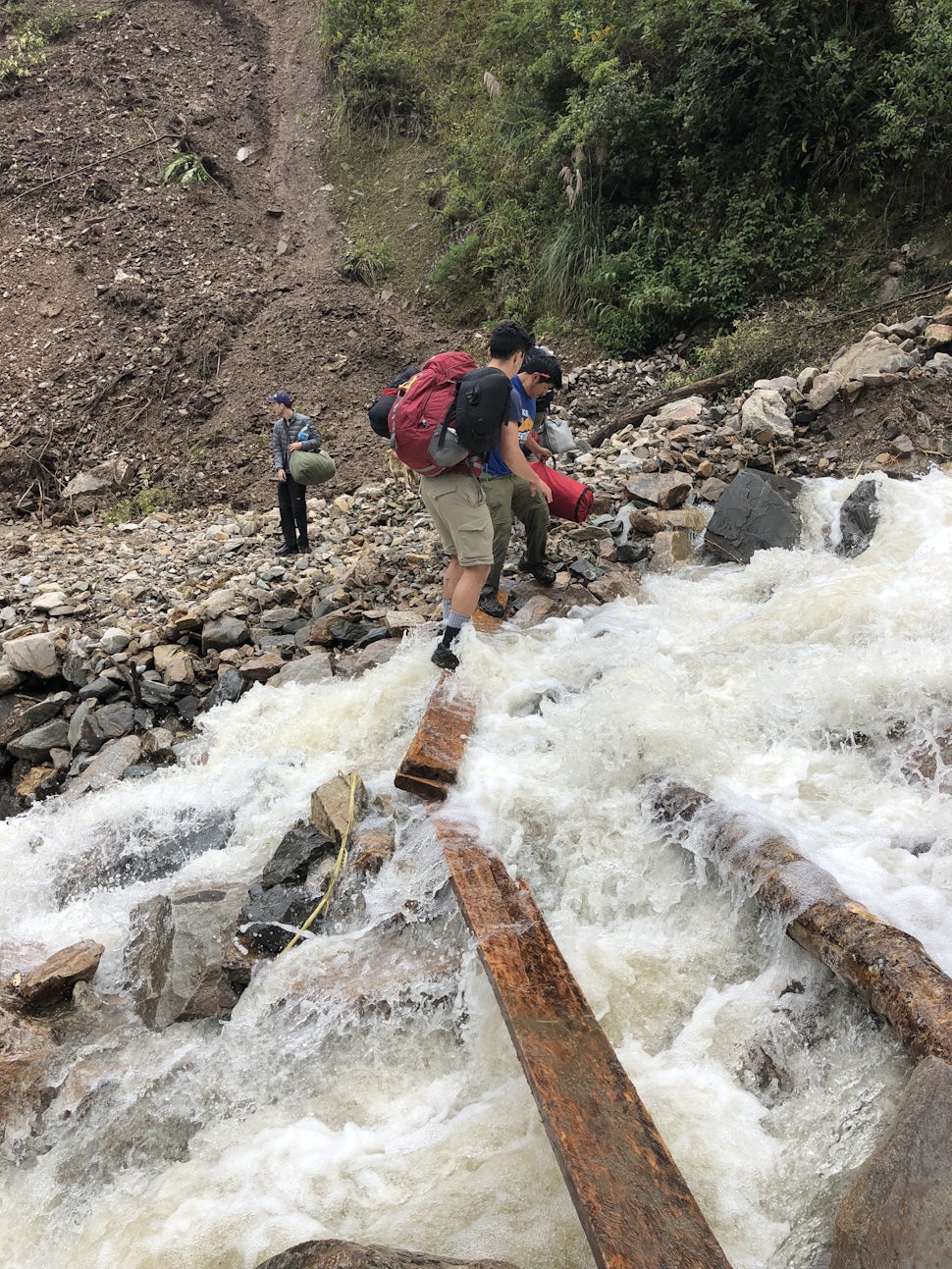Think Twice Before Trekking to Machu Picchu in the Rainy Season
Trekking to Machu Picchu during the rainy season poses extreme risk to you and your guides. Think carefully before exposing yourself to rock and mudslides.

My heart was pounding as I raced to avoid the boulders falling above me. To continue meant risking death at the hands of mud, rocks, and overflowing rivers. To turn back meant climbing up almost 10,000 feet, and losing my ticket to Machu Picchu. Welcome to the rainy season.
This March, I had the opportunity to travel to Peru, and naturally, made the obligatory pilgrimage to Machu Picchu. In Peru, the rainy season lasts from December through March, so I was there at the end. A variety of articles online (including here on the Outbound) discuss the merits of visiting Machu Picchu in the off season. Machu Picchu itself was no problem (although the view could have been better), but trekking was another story. The experience presented challenges I couldn’t have anticipated.
Having never experienced rainy season before, I didn’t know what to expect. Rain of course makes hiking less pleasant, but I was pretty confident I could handle it. I considered only the nuisance rain might present to my comfort, not the toll the rain could take on the trail.
The first two days of hiking went smoothly. The rain beat loudly against our metal roof all night, but while we walked the weather was clear. I thought we were lucky. After ascending Salkantay pass at an elevation of 15000 feet, everything should have been easy. But the rain had other ideas.
The third day of the trek was supposed to be easy. We would walk from our camp for the morning along a dirt road, while a truck would follow us with our luggage. In the afternoon, we would relax at nearby hot springs. For the first two hours everything was fine. We walked along the road through the jungle, with the raging Urubamba River a couple hundred feet below us. At one point, we watched a mudslide across the river carry mud, rocks, and trees hundreds of feet down to the water. I was grateful for the security of our road.
At our midway point, the truck pulled up and told us we would need to carry our bags the rest of the way because the road conditions were bad. Still not really understanding what was happening, this seemed fine. I had been trekking for months, so carrying my pack posed no real problem. When we began to walk again, though, it quickly became clear why the truck could not continue. In the night, the road had been destroyed by accumulated rain. Where 16 hours ago a road had been, there was now a waterfall. At several points, we had to run through areas of active rockfall. We used our packs as makeshift shields, but we all know that if a boulder came our way that would be it. Many of my companions came within inches of death. Once, a tree was torn out of the ground only feet behind where one of my hiking partners had just stood.
My group was fortunate to escape the jungle with nothing other than jittered nerves. But research after the hike revealed that not all who have attempted the Salkantay trek in the rainy season have been so fortunate. A young American woman died on the third day of the trek last March, when a rockslide opened up beneath her and sent her tumbling into the river far below. The jungle shows no remorse.
I came away from my trek with a sour taste of the tourist industry in Peru. Our guides told us that the trail would be closed after we all made it out safely. But just a few days later I met people in Cusco about to depart on the same trek that had almost killed us. The agencies did not even warn participants that there might be danger. At the end of the day, the companies just want to make money.
When I hike, I accept that I am putting myself at risk. Indeed, I might have gone on the hike even if I had known the risks. However, the key is that I expect to be informed. With over 20 people departing on the trek daily, most with organized groups, it did not even occur to me that I might be putting myself at risk. Even more upsetting to me was the position in which I put my guides. They were compromising their lives and families’ livelihoods for us, with minimal pay and benefits from the company. While I am willing to risk my own safety, I feel much less comfortable risking others for my own sake.
Trekking to Machu Picchu in the rainy season certainly gave me a deep respect for nature, and for Incan engineering. It is unbelievable to see Inca buildings and roads preserved in the jungle after hundreds of years of these conditions. If modern Peruvian architecture was left alone for even a few years of rainy seasons, I am confident that there would soon be very little evidence left.
If you are considering a trip to Machu Picchu during the rainy season and intend to trek, please think carefully. Know the risks to yourself, and also to the people who will be making your vacation possible.
We want to acknowledge and thank the past, present, and future generations of all Native Nations and Indigenous Peoples whose ancestral lands we travel, explore, and play on. Always practice Leave No Trace ethics on your adventures and follow local regulations. Please explore responsibly!
Do you love the outdoors?
Yep, us too. That's why we send you the best local adventures, stories, and expert advice, right to your inbox.




